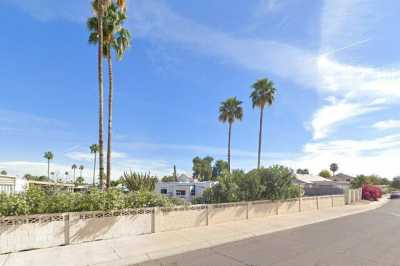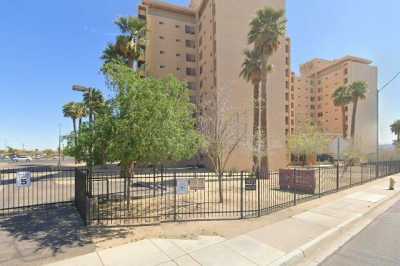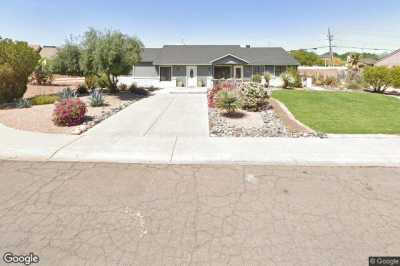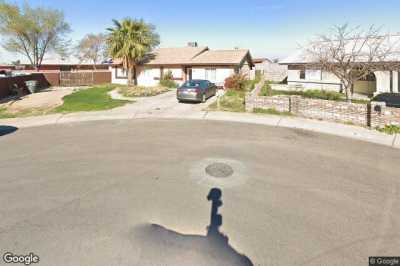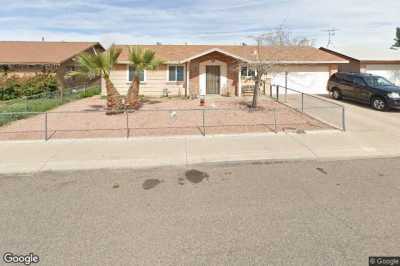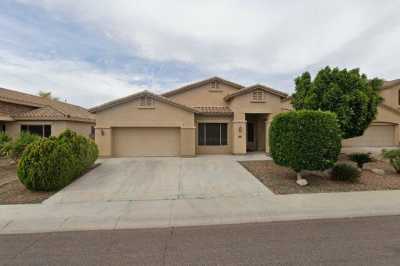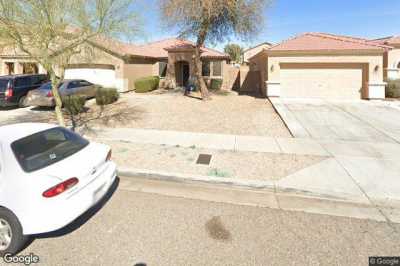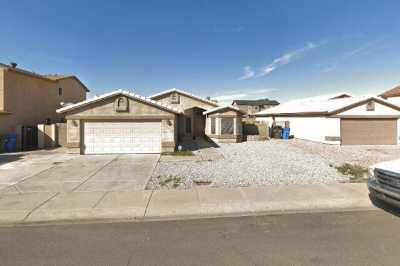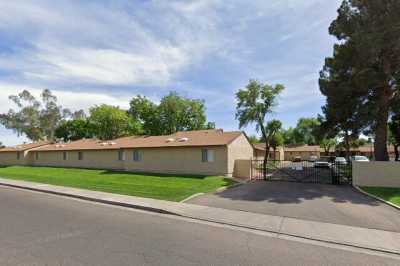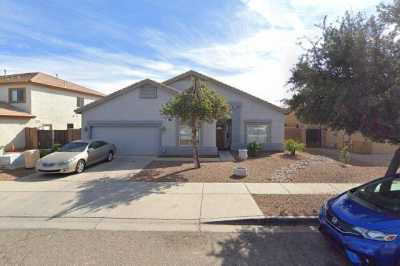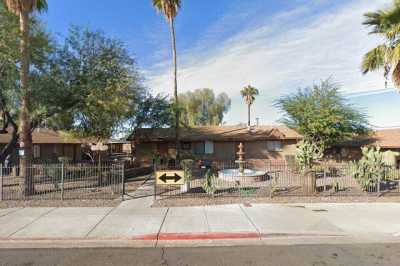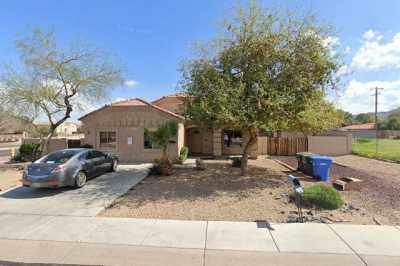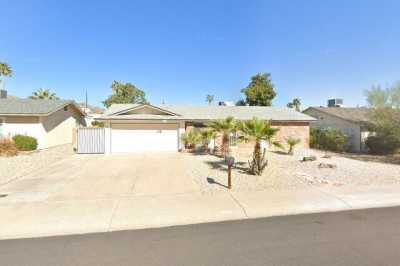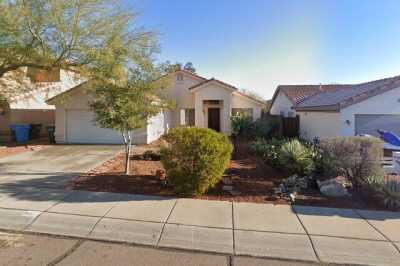
10 Best Independent Living Communities in Phoenix, AZ
Phoenix and the surrounding suburbs are leaders in senior independent living. While many retirees vacation in the Valley of the Sun for its blue skies and laid-back personality, Phoenix’s excellent medical infrastructure and relative affordability convinces many seniors to stay. Besides the snowbirds, a booming economy brings in highly skilled workers, who in turn bring their parents. Independent living in Phoenix is a good option for seniors who want to move out of a family home but don’t need the skilled care of an assisted living community.
In Phoenix, independent living looks like residential 55+ or 62+ neighborhoods that provide their residents with restaurant-style dining, social activities, resort-like amenities, and hassle-free living. Independent living communities usually have an all-inclusive monthly fee and a one-time move-in fee.
A Place for Mom partners with 22 independent living communities in a 10-mile radius of the Phoenix city center and 47 independent living communities within a 15-mile radius. While there is already a large supply of independent living communities within Phoenix and its suburbs, more independent living communities are currently being built to meet the rising demand.
Phoenix Independent Living Facilities | 1435 Reviews
Our free advisors can help
- Compare local facilities
- Determine care type
- Schedule tours
- Evaluate pricing
Our methodology
How we rank order the Phoenix community options above
We developed a proprietary recommendation system that orders Phoenix community options based on factors we know are important to seniors and their families:
- Proximity to your search location
- Availability of recent, high-quality reviews
- The amount of detailed community information available
Where we source our information
14,000+ communities
We collect proprietary data from our network of 14,000+ senior living communities in the U.S., with regular refreshes of data and information
350,000+ reviews
We have 387,000+ reviews from senior living residents and family members that provide first-hand accounts about senior living communities
- Costs of independent living in the Phoenix area
- What families are saying about independent living in Phoenix
- How to pay for independent living in Phoenix
- Understand Arizona laws and regulations for independent living communities
- What to know about independent living in Phoenix
- Phoenix independent living services and amenities
- Explore senior care with confidence
- Unfamiliar with Phoenix? Highlights for seniors
Costs of independent living in the Phoenix area
Each independent living community has slightly different costs, payment options, and plans, so it’s important to ask communities directly about their costs before choosing. Every Phoenix independent living community should be able to give you a clear picture of how much it costs to live there.
Independent living costs tend to have two parts: monthly fees and a one-time admission fee.
Monthly fees for independent living
Senior residents of independent living communities in Phoenix paid an average of $3,206 a month in total, including all extra fees, according to A Place for Mom’s proprietary data.[01] The cost figures in the chart below are the baseline rental fees that area residents of independent living communities pay before adding fees for care and amenities.
These figures are slightly lower than monthly costs in other top independent living markets in the nation but more expensive than most rental apartments in Phoenix — due to the added services and amenities available to residents of independent living communities. The monthly independent living community fee often includes the following:
- Rent for an apartment, townhome, or detached house
- Utilities
- A meal plan in a restaurant-style dining room
- Maintenance and landscaping
- Housekeeping, including laundry services
- Access to an in-house gym and exercise classes
- Access to in-house recreational amenities (pools, hot tubs, salons, movie theaters, cocktail lounges, computer rooms, craft rooms, libraries, outdoor grills, dog parks, and more)
- Social activities
- Transportation
- High-tech security systems
- In-house wellness concierge
One-time admission fee for independent living
Not all independent living communities have an admission fee. Admission fees are more common in senior living communities known as Continuing Care Retirement Communities (CCRCs). These communities have all senior care types on one site, with independent living, assisted living, and skilled nursing areas. The admission fee is a way to offset future expenses as your care needs increase due to aging. Depending on the community, the one-time move-in fee varies from $100,000 to over $1 million, based on how much care the community can provide. Often, a higher move-in fee causes monthly payments to be lower. Many retirees use the equity from their house to pay.[01] However, some independent living communities in Phoenix have Return of Capital plans (ROCs), which means the community may return up to 80% of the move-in fee back to the resident or the resident’s heirs if they choose to leave or pass away without the need of long-term care.
Average monthly cost of Independent Living in Phoenix, AZ vs. nearby cities
Average monthly cost of Independent Living in Phoenix, AZ vs. the state and national average
Average monthly cost of Independent Living in Phoenix vs. other types of senior living
Median monthly costs of Independent Living in Phoenix, AZ by room type
Average cost of Independent Living in Phoenix over time
What families are saying about independent living in Phoenix
Recent reviews for independent living in Phoenix
Legacy Village of Salt River in Scottsdale, AZ
MorningStar at Arcadia in Phoenix, AZ
Brookdale North Mesa
Reviews mention these favorite features of communities
How to pay for independent living in Phoenix
Most retirees pay for independent living with private funds. Because standalone independent living does not provide health services or personal care, it’s not covered by Medicare, Medicaid, or long-term care insurance.
Many retirees fund their independent living through the sale of a family home. Read on for further tips on the common ways people privately pay for independent living:
Veterans pensions and benefits can help pay for independent living costs. The Aid and Attendance is an additional benefit that may be applied to the VA pension and can be used for anything as long as it improves quality of life.
A veteran may qualify for a VA pension if they meet the following criteria:
- They were honorably discharged.
- They served at least 90 days of active duty, with at least one day during wartime.
- They meet low-income status, are 65 and older, or disabled.
Veterans need to meet at least one of the following standards to be eligible for the Aid and Attendance benefit:
- Have limited vision
- Need help to perform daily activities
- Be bed-bound
- Already reside in a nursing home due to mental or physical disability
The Aid and Attendance benefit can be used to pay for rent, care, or any other fees at an independent living community.
For seniors who wish to independently age-in-place, the Housebound allowance supports veterans who only need in-home care services. This means that even if home is an independent living community, care services may be covered there if the senior spends most of their time at home. Unlike the Aid and Attendance benefit, the Housebound allowance can only be used to pay for care services for a housebound senior. Note that you can’t receive both the Aid and Attendance and the Housebound benefit at the same time.
The Department of Veterans Affairs also funds the Shallow Subsidy initiative, which provides affordable housing to very low-income veterans. These rentals do not have the amenities that independent living communities provide.
Number of veterans living in Phoenix, Arizona, according to the U.S. Census Bureau
59 percent of veterans in Phoenix are 55+, according to the U.S. Census Bureau
Independent living fees don’t include personal care or health care services, so Medicaid and Medicare will not cover independent living costs. However, some independent living communities have assisted living and skilled nursing wings or access to third-party care services on site. And, these added medical care costs may possibly be covered by Medicaid or Medicare.
Anyone over 65 who has paid their Medicare taxes (or is married to someone who has) is eligible for Medicare. While Medicare will not cover cost-of-living fees, it can cover short-term, medically necessary care services, like rehabilitation care after a surgery. Medicare will also pay for hospice care if certain conditions are met. Medicare will not pay for long-term care services.
The Maricopa County branch of the Area Agency on Aging Locations is a helpful resource for seniors in Phoenix. This program can help connect Phoenix seniors with information about Medicare. It can also direct seniors towards local community support like the Help with Paying Medicare Costs Only program, which aids seniors in their Medicare premiums, deductibles, and copayments, or the Arizona Fee-for-Service Medicare Savings programs, which pay for low-income Arizona seniors’ Medicare premiums.
For more information, you can dial 2-1-1 and contact the Phoenix Social Security office.
Phoenix resident Medicare resources
Understand Arizona laws and regulations for independent living communities
Independent living communities don’t provide personal care or health care, so they are not regulated in the same way as assisted living communities. However, some independent living communities have assisted living and skilled nursing wings on site. These wings are regulated in the same way as stand-alone assisted living communities and nursing homes.
Independent living communities often have age and health requirements. Most require residents to be over 55 or 62 and won’t accept residents who are bedbound. Aside from these requirements, independent living communities go through similar, if not identical, inspections as traditional apartment complexes. Independent living residents can expect the independent living community to handle all of the maintenance and repairs, as well as keep the apartment or villa in a livable condition. Residents are also expected to keep their dwelling in a good condition and to not alter the apartment without consent from the community.
Arizona doesn’t have an agency to enforce any disputes between an independent living community and residents, so any problems are dealt with as private matters.
COVID-19 regulations for Phoenix independent living communities
Phoenix independent living communities must follow the same COVID-19 guidance as traditional apartment complexes. This means they follow state and city guidelines for mitigating the spread of COVID-19. Phoenix follows the Arizona Together program, which recommends that residents mask when sick and test for COVID-19 when exposed.
What to know about independent living in Phoenix
Independent living in Phoenix can be a senior retiree’s dream.
Phoenix is currently booming, but retirees have flocked to the Valley of the Sun for decades. The year-round sunshine and a local preoccupation with golf brings in plenty of snowbirds. But these delights are only part of the story why so many seniors choose to nest in Phoenix permanently.
Phoenix senior living is growing
Phoenix has a growing economy, so many retirees follow a child whose job brought them to the city. Some seniors are attracted to the strong medical infrastructure, and others are simply drawn to Phoenix for the sheer number of senior living options available.
In Phoenix, 7.7% of the population is over 70, [02] but in the suburbs like Paradise Valley, 23% of the population is over 70.[03] Because of the persistently high number of seniors, Phoenix has one of the highest concentrations of senior living options in the United States. This means that most retirees can find a senior living option that suits them in Phoenix.
With all this buzz, independent living costs in Phoenix are higher now than in the past. However, the cost of Phoenix’s independent living communities are still cheaper than the other top five senior living markets in the country, except for Dallas. As one of the most popular forms of senior living, and as one of the most profitable, independent living contractors continue to build these communities — making room for a new wave of seniors looking for a fresh lifestyle.
Phoenix senior living is laid-back
Independent living in Phoenix attracts active seniors who can take care of themselves but want simplicity and a richer social life. Most of Phoenix’s independent living communities offer a resort-like atmosphere, so living there feels like a forever vacation. On-site amenities often include pools, gyms, luxuriously designed interiors and common areas, and landscaped grounds.
Depending on the community, residents can live in an apartment, a townhome, or in some cases a stand-alone cottage within an age-restricted neighborhood. Many of these communities also provide concierge services. For example, wellness concierges can help residents develop a wellness plan, schedule fitness classes, and coordinate appointments with local health care providers.
Some Phoenix independent living communities have assisted living and skilled nursing wings on site. While they may be connected to or near the independent living community, these wings are licensed and registered differently. However, as part of their fees, many independent living communities can include provisions for future long-term care at these assisted living or skilled nursing wings.
Phoenix independent living services and amenities
Availability of select dietary accommodations in Phoenix independent living
Availability of select dining options in Phoenix independent living
Availability of select programs and activities in Phoenix independent living
Explore senior care with confidence
Know where to start.
Identify the right care for your loved one with our free assessment.

See what you can afford.
Understand cost and payment for long-term care based on your loved one's needs.

Find top facilities for you.
Free, personalized guidance from our Senior Living Advisors can help you narrow your search.

Tour your favorite facilities.
Our free touring checklist can help you choose the right community.
Unfamiliar with Phoenix? Highlights for seniors
Number of Phoenix residents over 70
The average high temperature in Phoenix in January
Health care for seniors in Phoenix
Phoenix has two hospitals that are nationally ranked in geriatric care.

Mayo Clinic – Phoenix
The Mayo Clinic – Phoenix is rated No. 1 in the Phoenix metro area and ranked in 10 specialties nationally, according to U.S. News and World Report. It’s ranked 13th in the nation for geriatric care.

St. Joseph’s Hospital and Medical Center
St. Joseph’s Hospital and Medical Center is nationally ranked in geriatrics, neurology, and neurosurgery.
Transportation for seniors in Phoenix
Residents generally need a car to get around Phoenix, as the urban sprawl can make it difficult to do otherwise. This is why many independent living communities have a transportation concierge arrange rides for residents, either as an a la carte service or included in the monthly fees. About 91% of independent living communities in Phoenix offer some form of transportation to their residents, usually included as part of their monthly amenity fees.[01]
For public transportation options, the Valley Metro Transit System is the city’s train system and it operates throughout most of the day and night. Though, the train is not so reliable, as wait times can sometimes exceed 20 minutes. Another option for seniors is Dial-a-Ride, which provides transportation to and from appointments. Uber and Lyft are also some reliable options for transportation around Phoenix, depending on the traffic and the time of day.
WalkScore gave Phoenix the following ratings, each out of 100, based on public data about the city’s transportation infrastructure.

Walk Score

Bike Score

Transit Score

Senior activities in Phoenix
Phoenix is an exciting place for active, retired seniors.
Gaming
Phoenix and the surrounding suburbs are home to many casinos, which several senior living communities organize shuttles and day trips to. The largest is Talking Stick Resort, which has a luxury hotel, a theater, a spa, a museum of Native American art, and an expansive game space. Casino Arizona and Gila River Casino also offer transportation to and from areas in Scottsdale.
Spas
Day spas are another part of the Phoenix culture. While most hotels in the area have excellent spas, there are plenty of stand-alone lodges that offer an immersive wellness experience. Many, like the Tierra Luna Spa on the Arizona Biltmore Resort, have magnificent views and enough options to keep you there all day.
Sports
Phoenix also has a great sporting culture, with the Footprint Center, State Farm Stadium, and the Chase Field. While they no longer offer senior discounts, the cherished local teams — the Arizona Suns, the Arizona Cardinals, and the Arizona Diamondbacks — bring the team spirit every time. Attending a home game is a popular activity for any age, including many seniors who plan their own day trips to see their favorite team. Casino Arizona also hosts Showtime Championship Boxing for serious Phoenix boxing fans to watch ringside.
Nature and art
For nature enthusiasts, there are plenty of natural landmarks in the surrounding desert and mountain landscape that bring people from around the world. For example, the Desert Botanical Garden is one of the best places to see unique desert flora, and it offers adult classes on landscaping, gardening, cooking, and art.
For architectural enthusiasts, tours are available at Taliesin West, the personal home of architect Frank Lloyd Wright. Phoenix also has an excellent musical instrument museum. Nearby is the Heard Museum, which has a nationally celebrated exhibition of Native American art.
Golf
Golf is a common hobby in Phoenix, and plenty of people visit for the golf scene specifically. Of the many golf courses to choose from, most have peaceful views of the Sonoran Mountain range and can be played all year because of the warm climate. Papago Golf Course is one of the most popular courses because of its scenic backdrop of the Papago Buttes and renowned bar and grill.
Food
Along with everything else about Phoenix, the food scene is vibrant and expanding. While Mexican restaurants and steak houses have been Phoenix staples for years, the city is starting to be a food capital of the United States. From street tacos to fine dining, Phoenix has exceptional food for any taste and any budget.
Frequently Asked Questions
Atria Chandler Villas, McDowell Village and The Groves are the top-rated Independent Living facilities near Phoenix, AZ. These Independent Living facilities received the highest rankings based on verified family reviews. See full list of communities.
The average cost of Independent Living in Phoenix is $3,811 per month. This cost may vary based on location, amenities, floorplan, level of care and other factors.
References
A Place for Mom. (2022). A Place for Mom proprietary data.
United States Census Bureau. (2021). Age and Sex (S0101): Phoenix City [Data set]. American Community Survey.
United States Census Bureau. (2021). Age and Sex (S0101): Paradise Valley Town [Data set]. American Community Survey.
United States Census Bureau. (2021). Population 65 years and over in the United States (S0103): Phoenix City [Data set]. American Community Survey.
WalkScore. 2022. Living in Phoenix.

More questions?
Ask an A Place for Mom local advisor at no cost.
- Scottsdale, Arizona
- Mesa, Arizona
- Surprise, Arizona
- Sun City, Arizona
- Cave Creek, Arizona
- Fountain Hills, Arizona
- Tempe, Arizona
- Chandler, Arizona
- Glendale, Arizona
- Sun City West, Arizona
- Avondale, Arizona
- Litchfield Park, Arizona
- Paradise Valley, Arizona
- Peoria, Arizona
- Carefree, Arizona
- Vistancia, Arizona
- Happy Valley Ranch, Arizona
- Tolleson, Arizona
- South Phoenix, Arizona
- Ahwatukee, Arizona

